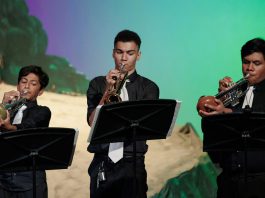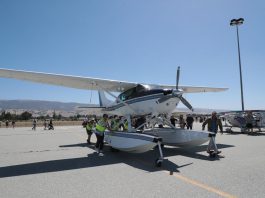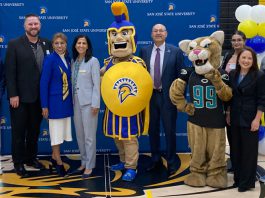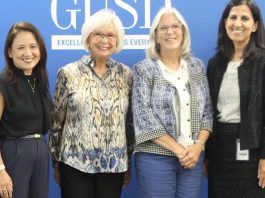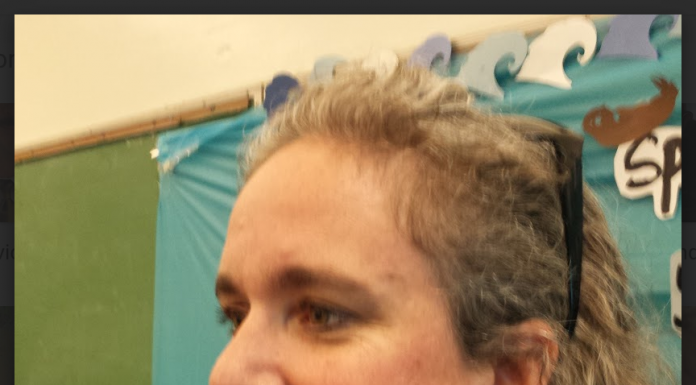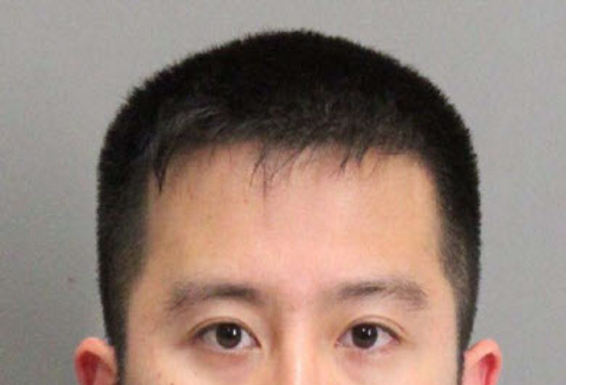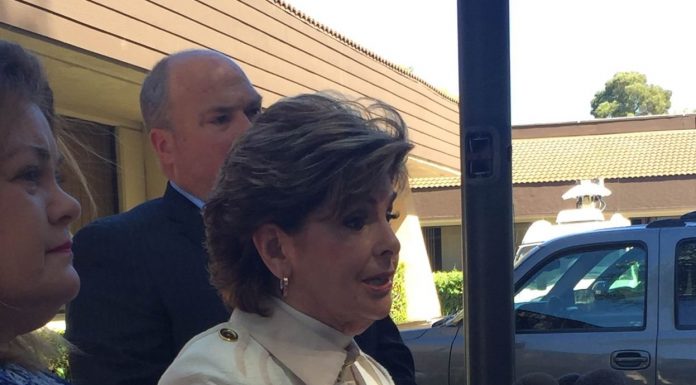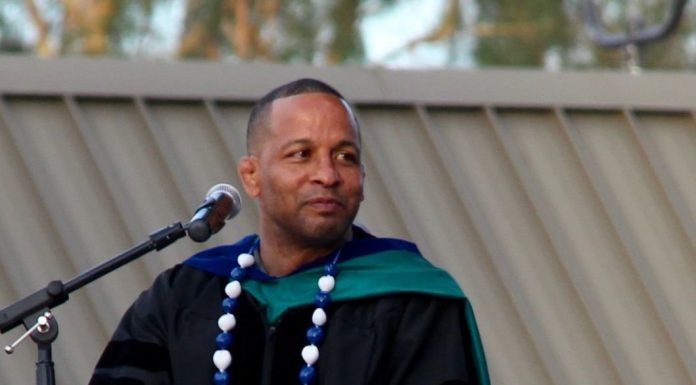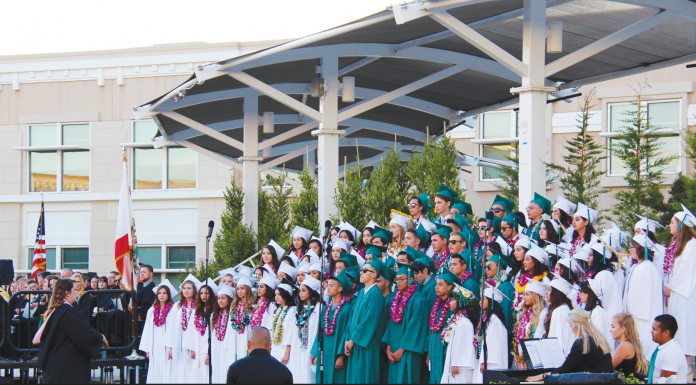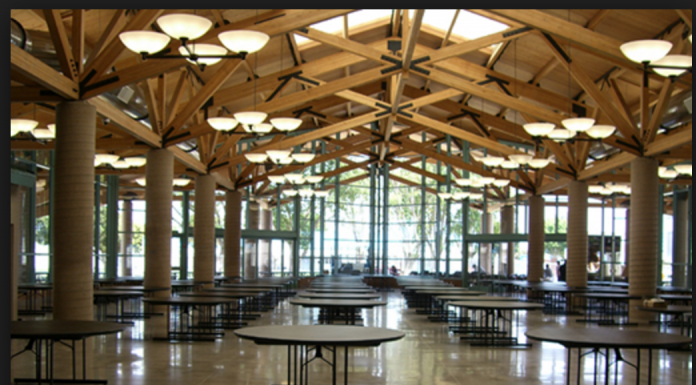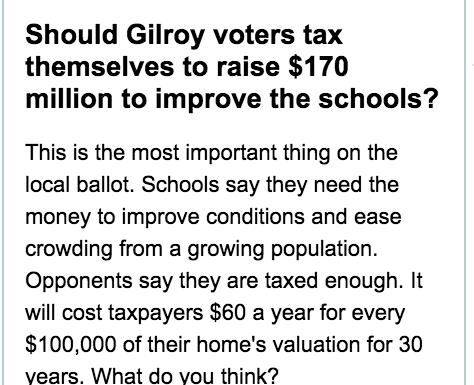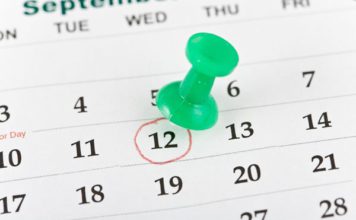Summer School Isn’t Torture
Nine years after it was picked as one of three California school districts for a pilot program funded by the David and Lucile Packard Foundation, Gilroy’s summer learning program has become a model of success.
DA: Gilroy School Teacher Posed as Porn Star
Former Gilroy High School science teacher Douglas Le was charged with 20 felonies Monday after impersonating a female porn star and soliciting photos from high school boys, according to the Santa Clara County District Attorney’s office.
L.A. Attorney Filed Two More Lawsuits Against Gilroy Schools
Two new lawsuits were filed Wednesday against the Gilroy Unified School District for its handling of a teacher who was allegedly “sexting” with students. Los Angeles lawyer Gloria Allred announced the suits Wednesday during a late afternoon press conference—in time for the nightly news—outside the GUSD office on Arroyo Circle.
Gavilan Names Kathleen Rose New President
From Gavilan's Press Release:
At their meeting on June 14, 2016, the Board of Trustees of Gavilan Joint Community College District named Dr. Kathleen Rose as the next President / Superintendent of Gavilan College. The appointment includes a two-year contract with compensation of $239,000 in...
Gilroy High Graduates 240
Gilroy High School Principal Marco Sanchez summarized the Class of 2016 Commencement Ceremony with a quote from Dr. Martin Luther King, Jr."‘If you can’t fly, then run. If you can’t run, then walk. If you can’t walk, then crawl. But whatever you do, keep moving forward,’"Sanchez quoted. “Well, Class of 2016, today you’re moving forward and on to the next step of your life.” The theme of progress carried on throughout the June 8 ceremony was in Centennial Circle at the center of the GHS campus. Music Director Jonathan Souza led the Gilroy High School Band in playing “Pomp and Circumstance” as graduates proceeded to take their seats. The graduates teemed with excitement, their blue and white gowns gliding around with each movement.Class President Ileana Garcia Jimenez, a California Scholarship Federation member, led the audience in reciting the Pledge of Allegiance. Jimenez is headed off to UC Santa Barbara in the fall. According to Sanchez, the Class of 2016 earned hundreds of thousands of dollars in scholarships and grants. Over 95 percent of the graduating class is heading off to college in the fall. Sanchez individually recognized the groups heading off to colleges, vocational/trade schools, and the military in his welcome speech. “You’re here today because you made each day count,” Sanchez said. “Except for that Senior Ditch Day in May.” Jimenez returned to the stage to welcome the audience and graduates. The ceremony marked the end of one chapter and the beginning of another, she said. “No matter what obstacles we’re faced with, I know we will not cower,” Jimenez said. “We will succeed. I wish you all the best and encourage you all to be as persevering as we have been through high school.” Moises Alvarado Partida led the Spanish welcome after Jimenez. Partida is headed to Gavilan College this fall.Gilroy Unified School District Board of Education President Fred Tovar echoed the speech he gave the day before at Christopher High School, except he quoted an African proverb instead of Muhammad Ali."‘If you want to go fast, go alone. If you want to go far, go together,’ Tovar said. “Remember these words as you venture out into the world, where you’re always stronger together.”Among other accomplishments, this class did over 20,000 hours of community service, said Athletic Director and Community Service Coordinator Julie Berggren.She asked 29 students, who completed over 160 hours each, to stand. “These students alone have completed over 6,361 hours!” she said. CSF Advisor and physics teacher Matt Hungerford recognized the 15 CSF members in the Class of 2016. Hungerford noted that students had to have outstanding grades in order to receive CSF honors. GHS Biomedical Science Academy Coordinator Jennifer Spinetti recognized “a very special group of graduates who chose to focus their high school studies in the science arena.” They are the second graduating class of the academy. “Most people say that it is intellect that makes a great scientist,” Spinetti said. “Well, it’s character. These BSA graduates have great character and we would like to honor them today.” There were two Salutatorians at the graduation: CSF members Nicole Holder and Elaine Sausen. The title marks the second highest ranking student in a graduating class, after the valedictorian. Holder, a singer and athlete, is headed to UC Berkeley in the fall to study biology. She graduated with a 4.2 GPA. Sausen, ASB Media Relations Commissioner and field hockey team captain, is headed to Johns Hopkins University in Baltimore to study English. She graduated with a 4.32 GPA.Holder and Sausen spoke separately. Holder compared high school to running the mile in track and field, with each lap representing a different year. She said that the Class of 2016 had made it to the finish line: graduation. “If there’s one thing this school has taught us, it’s to persevere and push yourself,” she said. Success doesn’t come without hard work.” Sausen spoke of her upcoming journey to Johns Hopkins University with hopes of becoming a writer. “Looking back on our high school career, it roughly follows the pattern of a book,” she said. “We’re all characters in this book, transitioning from awkward teenagers into young adults. Here’s the SparkNotes version: life is full of challenges. Sometimes you’re dealt cards that are not in your favor, but you can always find a reason to keep going. Never tell yourself something is impossible. If you do, you’ve quit before you’ve even begun.” Valedictorian and CSF member Andy Garcia is headed to UC Berkeley in the fall to study political economy. He graduated as Rotary Club President with a 4.6 GPA. Principal Sanchez noted that Garcia is just one of a couple students in the school district to receive the National Hispanic Scholar recognition. “I came to high school feeling incomplete, lacking much purpose, and definitely not thinking I’d end up here tonight,” Garcia said. Garcia spoke of how high school changed him and his fellow graduates. “Now that high school’s over, let’s exercise passion, curiosity, and love in what we do. This is the best way we can open doors for ourselves. And if we can open doors for ourselves, we can open doors for others.” Keynote Speaker and English teacher Zachary Powell spoke after Garcia. Powell was chosen to speak by the graduating class. He told a story about how he witnessed two men help a complete stranger push his broken down car out of the road to a gas station. “No one asked them to do it, they knew they had to,” Powell said. “They saw a stranded driver and they took action. And that is what you should be doing. Sometimes humanity occurs right in front of your eyes.” Powell ended his speech with some advice. “Don’t be afraid to be perceived as overly sensitive, because the only people we should try to impress are ourselves,” he said. Music Director Souza led the Chamber Singers in a rendition of the song “Go the Distance” from Disney’s animated film Hercules. Class officers from the future graduating classes of 2017, 2018, and 2019 acted as ceremonial diploma bearers. They handed out diplomas as graduates proceeded along the stage to shake hands with Principal Sanchez and the school board. Superintendent Dr. Deborah Flores officially graduated the Class of 2016 at the end of the ceremony. Graduates tossed their caps in the air as fireworks went off behind them. Journey’s “Don’t Stop Believin’” played as the audience exited the campus, a pleasant reminder to keep moving forward.
Christopher Graduates 433
Gilroy school board president Fred Tovar cited late boxing great Muhammad Ali in his speech to 433 of Christopher High School’s graduating seniors Tuesday night and urged them to take risks.
Do new schools matter?
In mailers to thousands to Gilroy homes, in speeches, in endorsements by politicians and wealthy businessmen and on signs all around town, voters have been told that passage of the $170 million Measure E bond proposal on Tuesday’s ballot will ensure Gilroy kids get a good education by building modern schools with state-of-the-art technology.But a Dispatch review of school rankings and research data suggest the jury is still out on whether new facilities make a significant difference in some measures of academic standards.In Gilroy, school rankings appear inconsistent on the question and suggest that factors such as poverty play a bigger role than facilities when it comes to classroom achievement.Christopher High School, the district’s $158 million showcase, was built with 2008 bond money and non-voter approved $33 million in Certificates of Participation, repaid from the general fund. Its state academic ratings are high, 8 out of 10 compared to all California high schools and 7 among schools with similar demographics.But Gilroy High School, an old facility with some recent modernization, ranks at 4 among all high schools and 5 among similar schools in the state.Glen View Elementary School was completely remodeled last year with about $7 million from 2008’s $150 million Measure P, money still being repaid by taxpayers.Glen View in the past has lagged in test scores and in recent tests that pattern continues. The school ranked 4 on a scale of 1 to 10 compared to schools statewide.Compared to schools with similar demographics it ranked 3. And in terms of how it serves low-income students, who make up most of its student body, it also ranked at 3.Gilroy Prep School, the only charter school in the Gilroy Unified School District, ranked at 10 among California schools, 9 in how it helps low-income kids and 6 compared to similar schools.At GPS, technology of the kind Measure E would pay for helps students. Personal computers allow students to interact immediately with teachers, and allow teachers to monitor in real time whether students understand what’s being taught.When it opened in 2011, GPS was put in a collection of old portables at South Valley Junior High School. And while the school has since had some upgrades paid for by bond money, its scores from the beginning have been among the state’s highest.GUSD officials, including assistant superintendent Alvaro Mesa, have said comparisons with a charter school aren’t fair and that differences between schools such as Glen View and Gilroy Prep have more to do with the percentage of low-income students than facility conditions.GPS has always focused on low-income, underserved families, with school officials sometimes knocking on doors in low-income neighborhoods to recruit students.About 55 percent of GPS students are on a free and reduced cost lunch program, an indication of those families’ low-income.The figure at Glen View is a lot higher, Meza said.Asked to comment on whether spending millions on school facilities and really matters in classroom achievement, schools superintendent Debbie Flores issued this statement:“The district has not stated that Measure E is needed to improve education, but rather to help maintain the high-quality of education currently provided to all local students. If Measure E does not pass, additional monies from the general fund would need to go to shoring up our older facilities and ensuring they continue to meet safety standards for students. This would take needed funds away from educational programs. Also, the district believes that equitable facilities should be provided to all students.”In the newest Yes on E mailer, Gilroy businessman and Chamber of Commerce 2016 Man of the Year for 2016 Joel Goldsmith put it this way: “Nothing in our community is more important than educating our young people, and that is best done in modern facilities.”Mayor Perry Woodward wrote in the mailing that passage “will help sustain the high quality of education provided to our children and allow us to modernize and build facilities to better support instruction needs.”When it comes to Gilroy’s oldest—South Valley and Brownell—and its newest—Solorsano—middle schools there is almost no difference in their state rankings.Here’s now the rankings show up on greatschools.org, which tracks state school standings nationwide.Brownell and Solorsano ranked 7 and South Valley 6 when compared to all California middle schools.Compared to middle schools with similar demographics, Brownell outranked Solorsano, 7 to 6, and South Valley was at 5.Compared to how well the schools meet the needs of low-income students, Solorsano ranked 6 while the others had 5.At the California Policy Center, a think-tank that digs into school bonding, researcher and author Kevin Dayton said Tuesday, “I am not aware of any peer-reviewed study, or any study for that matter, that has proven that a bond measure and facilities improvement results in better test scores. To think that a new building is going to make children be better mathematicians or thinkers is absurd.”However, in a 2010 study the 21st Century School Foundation (at http://bit.ly/24jfAVL) in Washington D.C. found that “Recent research continues to point to a small but steadily positive relationship between the quality of a public school facility and a range of academic and community outcomes.”Among its cited research one study found that, “In schools with poor facilities, students attended less days on average and therefore had lower grades in English Language Arts and Math standardized tests. Attendance was found to be a full mediator for grades in ELA and a partial mediator for grades in math.”Another cited study found a “4-9 percent difference between students in schools in worst/best condition; 5-9 percent difference between students in oldest/newest schools; 4 percent difference in graduation rates between students in schools in worst/best condition and between students in oldest/newest schools.”Dayton is critical of the political processes behind school bond sales.“At every stage of the process, interests that will benefit from bond sales can take advantage of a system that favors passage of a bond measure,” he wrote in 2015. “Some issues of concern include use of public funds to develop campaigns to pass bond measures, significant political contributions to campaigns from interests likely to benefit from construction, involvement of college foundations as intermediaries for campaign contributions, and conflicts of interest and alleged pay-to-play contracts.”He went on, “Few Californians realize how much debt they’ve imposed on future generations with their votes for bond measures meant to fund the construction of new and modernized school facilities.“From 2001 to 2014, California voters considered 1147 ballot measures proposed by K-12 school districts and community college districts to borrow money for construction via bond sales. Voters approved 911 of these bond measures, giving 642 school and college districts authority to borrow a total of $110.4 billion.”Dayton’s study can be found here: http://bit.ly/1TY7qAC.In its latest round of campaign finance disclosures, the Yes on E group, Friends of GUSD Supporting Measure E, listed more contributions from companies outside Gilroy that do business with the school district.They include Val’s Plumbing & Heating of Salinas, $2,500; Total Securities Concepts Division of TSCS, Inc., of Prunedale, $2,500; and Palace Business Solutions of Santa Cruz, $500.Those are in addition to more than $30,000 in contributions already received from a half-dozen of the school district’s biggest contractors, some of whom have worked on previous bond projects, including the Seward L. Schreder Construction of Redding. That firm did more than $14 million in bond-related projects with GUSD from 2011 through 2015 and is Measure E’s biggest financial supporter at $10,000.In its campaign filing report, the pro-E committee listed spending of $2,107 for 400 yard signs and $5,753 to print and mail flyers to 10,000 Gilroy homes.It also lists a $2,279 reimbursed to Jaime Rosso for money he spent out of his own pocket for campaign literature, banners and sign lumber before the committee had its own account, he said. Rosso is the spokesperson for the committee and a longtime GUSD school board member.
Editorial: Yes on Measure E
If you want to make America great again, there’s something you can do right away: Vote yes on Measure E and support Gilroy’s schools.With one swoop of your pen and a serious commitment of $60 for every $100,000 of property you own, you can build a new elementary school and fix up degrading middle schools. You can keep all of the district’s schools top notch, which is what we think makes America and our community great.For some reasons that make no sense to us, schools, teachers and taxes have become anathema in this country over the past 40 years. Everyone wants the best services but no one wants to pay for them.If you go back to a time a lot of people think America was great (and we think it’s still great, by the way), you might try the 1950s and 1960s when tax rates, particularly on the rich, were double and triple what they are now. Under Dwight D. Eisenhower, the rich paid 91 percent of their income. Under Richard M. Nixon, it was down to 77 percent. But then it kept dropping as rich people gained more power and convinced a large number of Americans that taxes were bad, particularly taxes on the rich. Back then, people didn’t mind the taxes as much because they knew they were making America great. They were proud of their country and still incredibly rich, despite the taxes.The earlier tax rates afforded us immeasurable greatness. We built a transcontinental highway system. We built the biggest buildings in the world. We went to the moon. We built great schools and free public university systems.But now schools have to raise money by holding their hats out like beggars. What’s happened to this country, where no one asks us to vote to spend trillions on wars both parties later realize were mistakes, but we act like the schools are criminals for wanting to give teachers a living wage and give kids modern buildings and educational systems?How do so many people--some of them wealthier people who send their children to private schools-- figure taxes to help schools are a bad thing? There are exceptions, like Don Christopher, a businessman who puts his funds where his heart is. We aren’t saying the schools and their administrators are perfect. We’ve spent plenty of time dissecting their faults, poring over every document. We aren’t happy about some of the lack of transparency we’ve seen. We don’t like that they don’t live-stream school board meetings. We don’t like how they rushed this election without time to make a stronger case and can’t or won’t even name who solicited the highest donations. The list of projects the money will be spent on is not detailed enough. We question some of the ties between contractors and the board. We don’t like the fact that Christopher High School came in so over budget that its promised theater was never built, the track and field needed private funding to be completed and seven years after the building was finished, it needs repairs.But after putting them through the investigative wringer, we see no reason not to put up another $170 million to keep our schools on the cutting edge. (For comparison’s sake, the Iraq War cost $720 million a day.) The bottom line is that we have to support our schools, whatever it takes. To do anything less is criminal. It’s the opposite of making America great.In Finland and China teachers are as valued as doctors and CEOs. Those countries haven’t forgotten the value of great education. Rather than criticizing teachers unions we’d like to see the schools pay the way private companies do. That would guarantee the best and the brightest get the jobs and hold them.If you want to look at just the bottom line: this isn’t so much a tax as it is an investment. Nothing will make property value go up more than a great school system. Gilroy homes are already a bargain in Silicon Valley. Add more school buildings like Christopher High and more programs like Gilroy High’s biomedical training, and watch the values increase far more than the taxes.
Most School Bond Backers are from out of Town
More than 90 percent of the $37,696 in the Yes on Measure E campaign chest is from outside Gilroy—most from firms, including one in New York, whose business with the school district exceeds $33 million just since 2011.
Gilroy School Chief Asks for Voter Support
At this time, we’re housing our children in school buildings where their own parents attended classes 30 or 40 years ago. The average age of schools in the Gilroy Unified School District is 30 years old and five schools are more than 50 years old. The District has taken great care of the schools but they need to be renovated and rebuilt.



